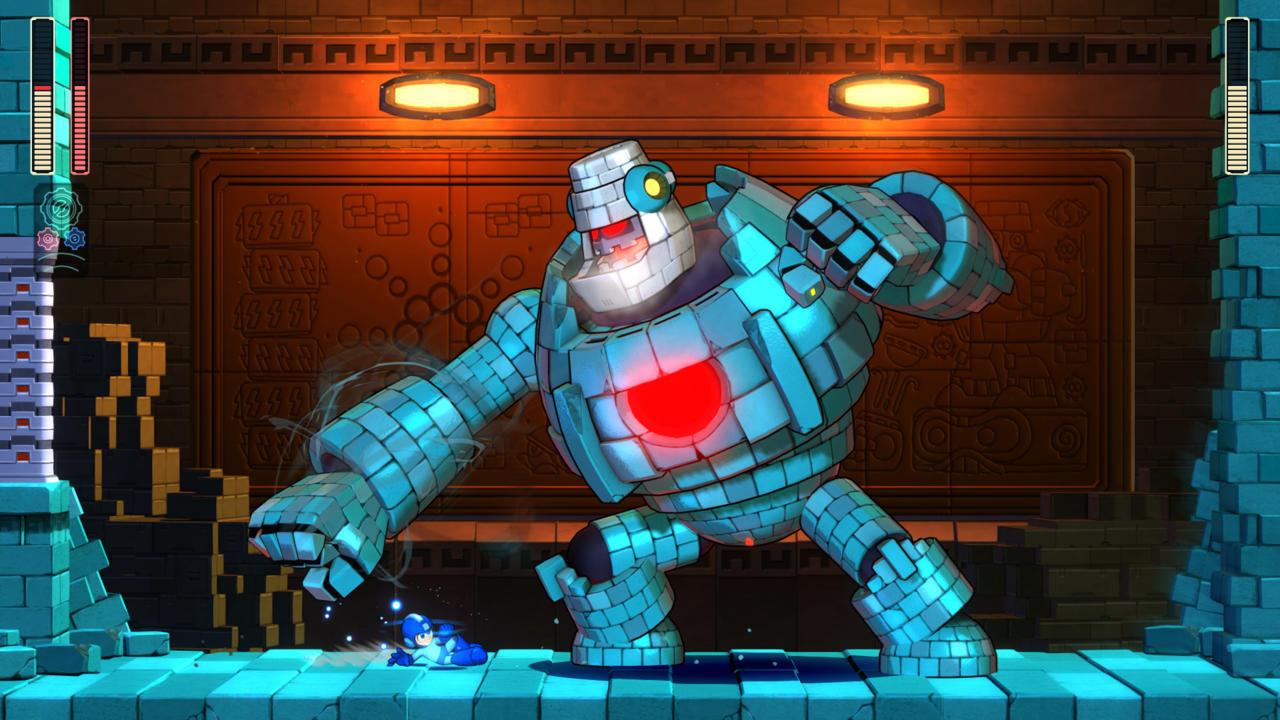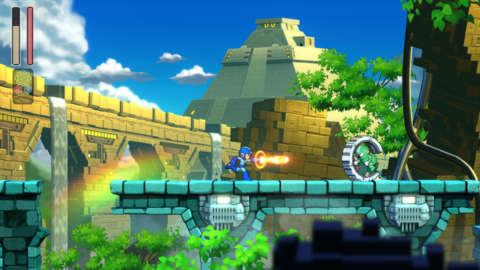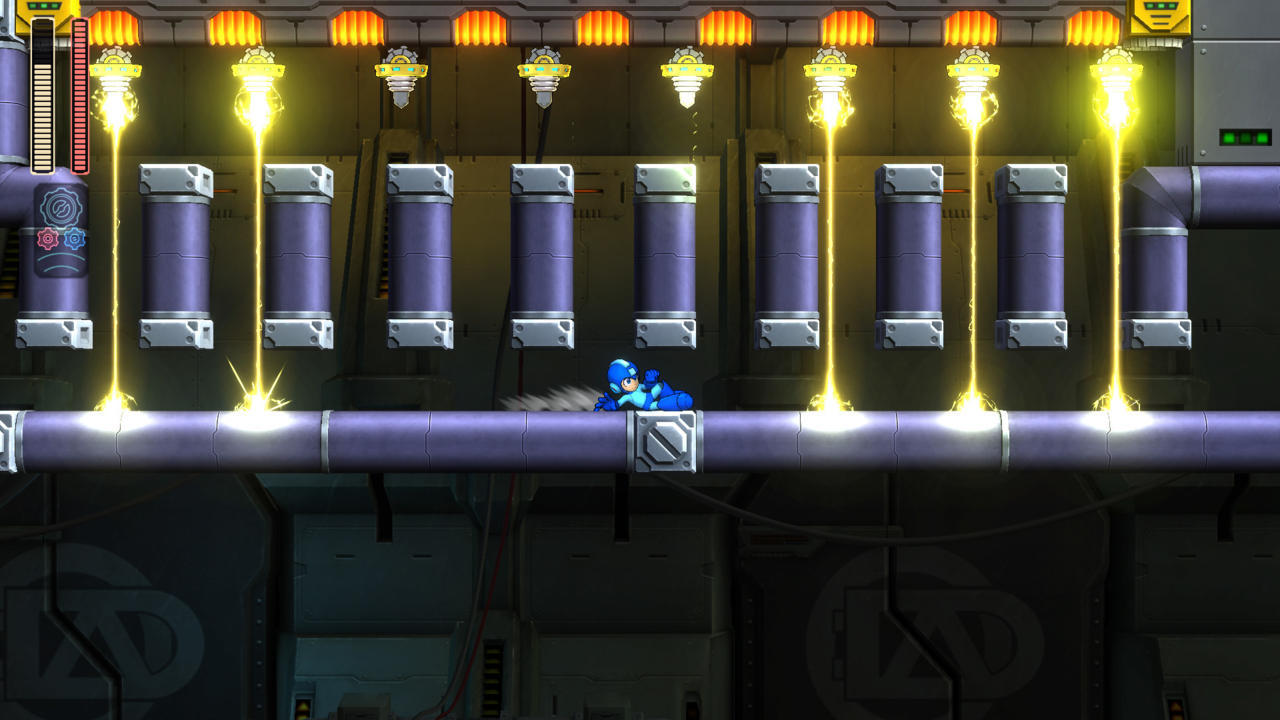Mega Man 11 is the first new main-series entry in eight years, but it feels like it's been much longer than that. Both Mega Man 9 and Mega Man 10 were very conscious retro throwbacks, with graphics and gameplay styled after the six original NES games. As a true step forward for the classic series, it comes after a 20-year dry spell. At E3 2018, we spoke with producer Kazuhiro Tsuchiya and director Koji Oda about finally modernizing one of Capcom's most iconic franchises.
"When we were tackling Mega Man 11 and we were thinking about what kind of presentation do we want to make, I felt like having another retro game just didn't feel right," Tsuchiya said, via a translator. "It would severely limit the amount of stuff that we could do. Since there's been such a long lapse between the last game and this one, I felt like the best thing to do is to make the game appropriate to modern hardware, use as much of its potential as possible, and make a game that people would be able to look at and recognize that it's the next entry. It's a step forward in the Mega Man franchise."

Ultimately that meant designing a new look for the game, but finding a way to make it recognizable and a natural progression. Tsuchiya said they were very conscious of making it stray too far from the existing style, not wanting to "alienate pre-existing fans." Ultimately the team aimed to make a Mega Man "that looked like he was taken straight from a piece of artwork."
Part of the visual style, naturally, is the animation. But when it came time to animate Mega Man in this new generation, with a fully polygonal character, Capcom discovered it needed to tweak the frames in subtle ways so that it would feel like the classic games. The result is a gorgeous and vibrant new presentation that feels as if it controls with all the pixel-perfect responsiveness of one of its 8-bit counterparts, which was no accident.
"That was something that we took special care in working with the animation artists," said Tsuchiya. "With the modern hardware it's completely capable of making really smooth graphics and smooth animation, but what we quickly found was if it's too smooth then it affected the gameplay and the controls weren't as tight as we wanted it to be. We actually went back and took a look at the older games, and took a look at the animations that Mega Man had, such as him climbing up the ladder, and see which frames were the most important, which frames of Mega Man really heeded to the type of controls that you had. We took a look at that and made sure that all the gameplay components still felt really tight and almost nostalgic to the previous entries, while also still making sure that the visual style was modernized as well."

It's not without its new elements, though. The new Double Gear system gives Mega Man two abilities that can be toggled for short bursts: one that makes his shots extra-powerful, and another that slows time around him. I had thought this would be a crutch for beginners, but during a hands-on I had discovered it actually allowed much more depth. The additional options actually let stage design be built around the assumption that you have these new tools at your disposal. If anything, it adds new wrinkles to the challenge, rather than making it easier.
"I wanted to build something that would open up additional gameplay and options for veteran players, but at the same time also support new fans coming into the franchise for the first time as well," Tsuchiya said. "It was a challenge to try to come up with something that didn't overpower the core mechanics, and allowed those core mechanics to stay there, and would actually help to add something new to that. It was a process of discovery for us. It was a lot of work fine-tuning everything to make sure that it all meshed together well."
Thankfully, it appears Mega Man is in good hands. After a long hiatus the Blue Bomber is finally returning with a beautiful presentation and smart gameplay improvements. It only makes sense, coming from two long-time fans of the series. Asked for their favorite Mega Man games, the two gave strikingly different but altogether encouraging responses.

"Aside from the classic numbered series, the very first Mega Man Battle Network--that was something that really inspired me," said Tsuchiya. "The storyline, the setting, everything about it. I think it did a really good job of portraying the imagination of a child. I think that game really captured that really well. When I first saw it and I first tried it out, that was something that really impacted me in a big way."
"For me it would be the first Mega Man," added Oda. "For me, when I first played it, the core gameplay was so solid. I feel like the original gameplay was so tight and so complete to begin with that my responsibility was to make sure that I wouldn't detract from it so much as making sure that I would complement it."

